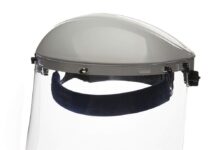In this article, we will explore the advantages of using steel welding tables over aluminum ones. If you’re in the welding industry or even just a hobbyist, you probably understand the importance of having a reliable and sturdy work surface. Steel and aluminum are two common materials used for welding tables, each with their own unique benefits. By examining the advantages of steel, we hope to provide you with valuable insights and help you make an informed decision when choosing the right table for your welding projects.
Durability
Longevity
When it comes to durability, steel welding tables have a clear advantage over aluminum ones. Steel is known for its exceptional strength and resilience, making it a reliable choice for welding applications. Steel tables can withstand heavy loads and are less likely to deform over time, ensuring a longer lifespan compared to aluminum tables.
Resistance to wear and tear
Steel welding tables also offer superior resistance to wear and tear. They can endure the constant heat and impact generated during welding processes without showing signs of damage or deformation. This makes them particularly suitable for heavy-duty welding tasks, where durability is crucial for long-term performance.
Strength
Load-bearing capacity
The strength of steel welding tables is unrivaled compared to their aluminum counterparts. Steel has a high load-bearing capacity, allowing it to support heavy pieces of metal during welding projects. This superior strength ensures stability and prevents the table from buckling or bending under substantial weight, providing a safe and reliable work surface.
Resistance to deformation
One of the key advantages of steel welding tables is their resistance to deformation. Steel has a high resistance to bending and warping, even under extreme heat conditions. This means that the table remains flat and level, ensuring precise and accurate welding results. Aluminum tables, on the other hand, may deform or warp over time, affecting the quality of the welds.
Stability
Reduced vibration
Steel welding tables offer enhanced stability due to their weight and structural integrity. The substantial weight of steel reduces vibrations caused by the welding process, providing a steady work surface. This reduces the risk of inaccuracies or imperfections in the welds caused by any unwanted movement or shaking.
Increased accuracy
Stability plays a crucial role in achieving precise and accurate welds. Steel welding tables’ stability ensures that the workpiece remains secure and steady during the welding process. This allows for better control and accuracy, resulting in high-quality welds that meet the required standards and specifications.
Weight
Portability
While steel welding tables have undeniable strength, they can be heavier and less portable compared to aluminum tables. However, this weight can also be an advantage in certain situations. Steel tables are often preferred in permanent welding setups or large-scale industrial applications where portability is not a primary concern.
Ease of transportation
Aluminum welding tables, on the other hand, are significantly lighter and more easily transportable than steel tables. Their lightweight nature makes them ideal for mobile welding operations or situations where frequent table repositioning is required. Aluminum tables offer convenience and ease of transportation without compromising on structural integrity.
Thermal Conductivity
Heat distribution
Steel welding tables excel in thermal conductivity, enabling efficient heat distribution during welding processes. The high thermal conductivity of steel allows heat to spread evenly across the table’s surface, preventing localized hotspots. This promotes consistent heat distribution to the workpiece, ensuring uniform welds and minimizing the risk of overheating or warping.
Minimization of warping
By efficiently dissipating heat, steel welding tables help minimize the risk of warping in the workpiece. The controlled heat distribution prevents excessive temperature fluctuations that can result in the distortion of metal components. This is particularly important when working with materials sensitive to temperature changes, ensuring high-quality welds and preserving the integrity of the project.
Cost
Material costs
One of the factors that may influence the choice between steel and aluminum welding tables is the cost. Steel is generally more cost-effective than aluminum as a raw material, making steel tables a more affordable option upfront. This can be advantageous, especially for those on a budget or involved in cost-sensitive projects.
Maintenance expenses
When considering the overall cost, maintenance expenses are another important factor. Steel welding tables require minimal maintenance and are highly resistant to wear and tear, reducing the need for frequent repairs or replacements. Aluminum tables, on the other hand, may require more frequent maintenance due to their lighter and potentially less durable nature, which can result in higher long-term costs.
Corrosion Resistance
Rust prevention
Steel welding tables are highly resistant to corrosion, especially if they are properly treated with protective coatings. The inherent strength and resilience of steel make it less prone to rust compared to aluminum. This corrosion resistance ensures a longer lifespan for the welding table, even in harsh or corrosive environments, and reduces the need for premature replacements.
Increased lifespan
Thanks to its corrosion resistance, steel welding tables can provide a longer lifespan compared to aluminum tables. The ability to withstand exposure to various elements and corrosive substances prolongs the table’s usability and functionality. This increased lifespan adds value to the investment and ensures that the table remains in excellent condition over an extended period.
Versatility
Compatibility with various welding processes
Steel welding tables offer excellent compatibility with a wide range of welding processes. Whether it’s MIG, TIG, or Arc welding, steel tables can withstand the heat and mechanical forces associated with different welding techniques. This versatility makes them suitable for a variety of welding applications and allows for flexibility in choosing the most suitable welding method for the project at hand.
Customizability
Steel welding tables also offer a high degree of customizability. Due to their strength and durability, steel tables can be modified or adapted according to specific project requirements. Additional features such as clamps, fixtures, or dedicated tooling can be easily integrated into the table’s design, enhancing its functionality and making it more tailored to individual welding needs.
Surface Finish
Effect on weld quality
The surface finish of a welding table can significantly impact the quality of the welds produced. Steel welding tables typically have a smoother and more refined surface finish compared to aluminum tables. The smooth surface minimizes friction during the welding process, allowing for better control and accuracy. This polished finish contributes to higher-quality welds with fewer imperfections.
Ease of cleaning
Steel welding tables are relatively easy to clean and maintain due to their smooth surface and resistance to corrosion. Welding splatter or debris can be quickly removed, preventing any interference with subsequent welding tasks. The ease of cleaning ensures a clean and uncontaminated work surface, promoting optimal weld quality and reducing the risk of any defects or flaws.
Special Considerations
Specific project requirements
While the advantages of steel welding tables are numerous, it’s important to consider the specific requirements of each project. Certain applications may necessitate the lightweight and portability features of aluminum tables, making them a more suitable choice. Understanding the unique demands of each welding project is crucial in making an informed decision regarding the type of table to use.
Environmental factors
Environmental factors can also influence the choice between steel and aluminum welding tables. If the welding process takes place in an environment with high humidity, corrosive substances, or extreme temperature variations, the corrosion resistance and sturdy nature of steel tables may be more beneficial. On the other hand, aluminum tables can be advantageous in situations where weight and portability are paramount. Considering the surrounding environment is essential in selecting the optimal welding table material.





































